A SmartBob® works like an automated tape measure, dropping a weighted cable to material surface at timed intervals. This sensor, sometimes called a plumb bob or bin bob, is highly reliable and has a long service life. A network of SmartBobs can provide inventory control for up to 255 bins of heights up to 150 feet.
A variety of network accessories, such as consoles for local data access, wireless transceivers, and web-based software, ensure that the SmartBob will keep users from climbing bins for decades to come.
Models and More
Bob’s Smart Design
- Cloud-based Software for data sharing and vendor-managed inventory
- Simple mounting via a 3” NPT connection
- Class II, Groups E, F & G hazardous location approvals
- Immune to airborne dust, steam, and temperature changes
- Measures vessels up to 150 feet tall
- ± 0.25% distance measurement accuracy
- Repeatable results in dry bulk solids, powders, liquids, and slurries
- Molded polycarbonate enclosure rated NEMA 4X, 5, 9, and 12
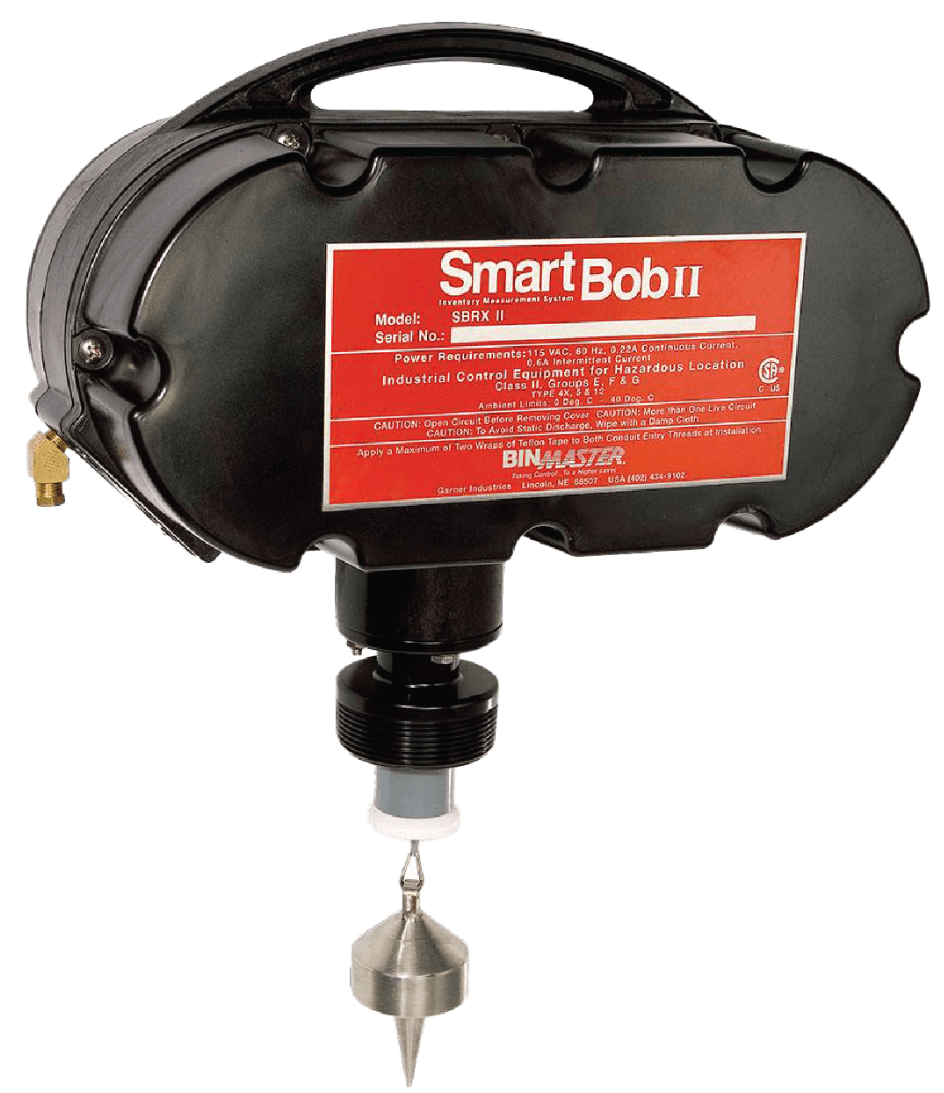
Image Credit: BinMaster
SmartBob by BinMaster
Video Credit: BinMaster
SmartBob Models
SmartBob II Remote
SBR II
The SmartBob remote is an electro-mechanical sensor designed for level measurement at distances of up to 150 feet. Each remote is individually constructed utilizing a range of cables, probes, and special features. SmartBob’s cable cleaning method guarantees long-lasting, trouble-free performance.
It is incredibly durable with a two-compartment design and sturdy, lightweight molded polycarbonate shell. With no field calibration necessary, SmartBob is easy to install using flat or angled mounting plates, requires minimal wiring, and is rated to Class II, Groups E, F & G certifications.

Image Credit: BinMaster
Submersed Solids
SBR II SS
Instead of using a sight tube, users can measure the level of solids settled at the bottom of a tank using the SmartBob SS. Often used to measure sediment settled below liquid in brine tanks, it comes equipped with corrosive-resistant stainless-steel cable, a 3” CPVC pipe extension, and a Suredrop cap to keep unwanted material out of the standpipe.
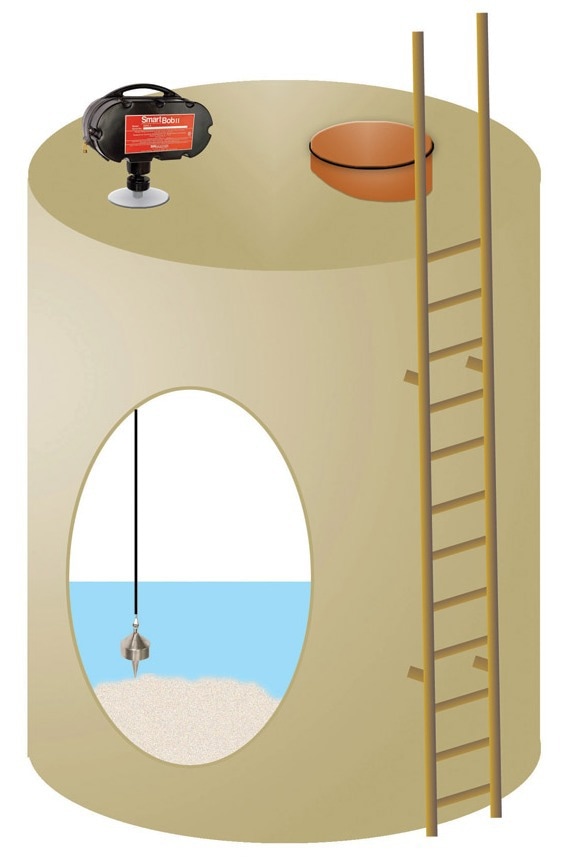
Image Credit: BinMaster
Analog Output
SBR II AO
The SmartBob AO includes an integrated keypad and a built-in 4–20 mA output. It is wired to a 4-20 mA input to automatically transmit an analog signal containing measurement data to a PLC.
Using the onboard keypad, the AO is set up to collect measurements at predetermined intervals. Two programmable relay outputs can be utilized as error alarms or to signal high or low readings.
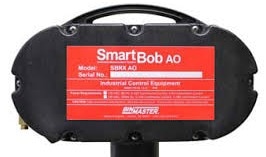
Image Credit: BinMaster
High Temperatures
SBR II HT
The SmartBob HT can be employed where the process temperature is between 240 °F and 500 °F. A 12” long, 3” diameter galvanized standoff pipe separates the sensor from the heat source. To keep the probe out of the standpipe and level with the vessel top, a Teflon cable guide is enclosed in a 1” stainless steel pipe extension.
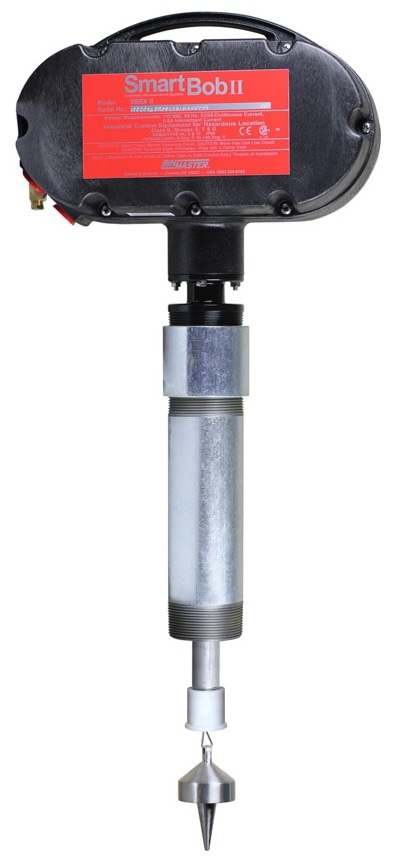
Image Credit: BinMaster
Super High Temperatures
SBR II SHT
The SmartBob SHT is ideal for extreme process temperatures between 500 °F and 1000 °F. It has a 36” long, 3” diameter galvanized standoff pipe to keep the sensor away from the heat source.
A 1-1/4” galvanized pipe extension encloses a bronze cable guide. The extension prevents the probe from penetrating the standpipe and level with the vessel top. In the mechanical compartment, Delrin pulleys are replaced by aluminum pulleys.

Image Credit: BinMaster
MultiBob Large Bin System
SBR II MB
The SmartBob MB system employs 2 to 32 SmartBob sensors installed on a single vessel and is intended for large-diameter vessels. The software used for bin inventories records data from each sensor, computes the average level, and determines the percentage of the bin that is full.
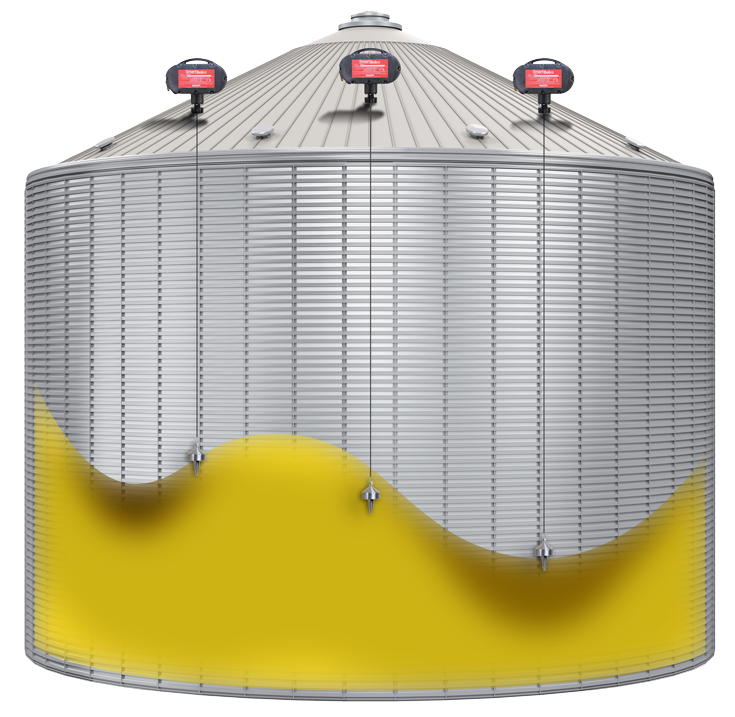
Image Credit: BinMaster
Side Mounting
SBR II HM
The SmartBob HM should be horizontally mounted. This option is used when a sensor cannot be mounted on top of the bin. This modification includes a rigid extension that is custom-made in lengths from 12” to 36” long and installs through a 4” opening on the side of the vessel.
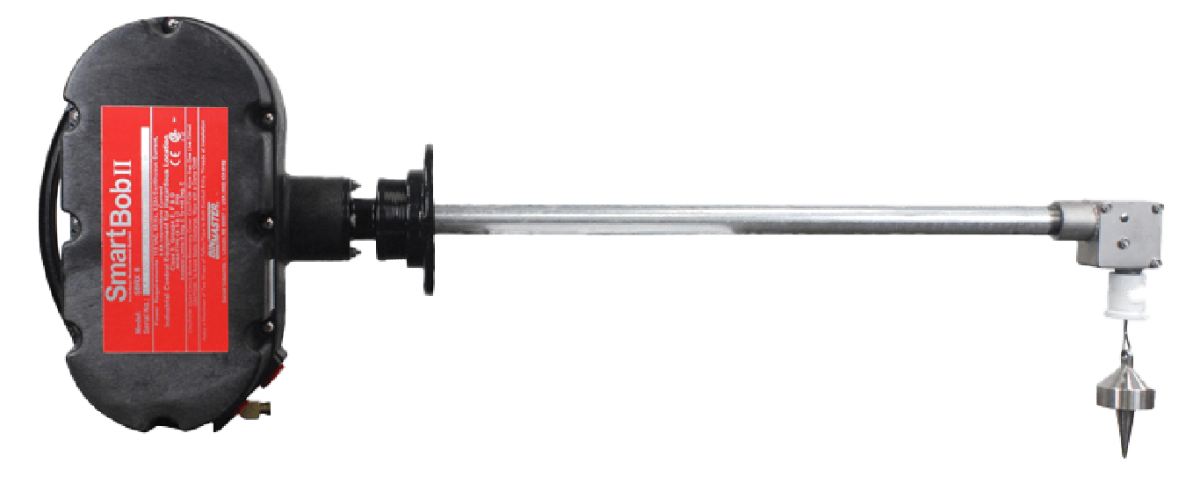
Image Credit: BinMaster
Design and Function
How does it work?
The SmartBob sensor functions similarly to an automated tape measure. The sensor, which is mounted on top of the silo, lowers a weighted cable to the material surface. The cable retracts upon impact while counting pulses that are translated to a level measurement. Measurements are scheduled at predefined time intervals to track inventory changes over time.
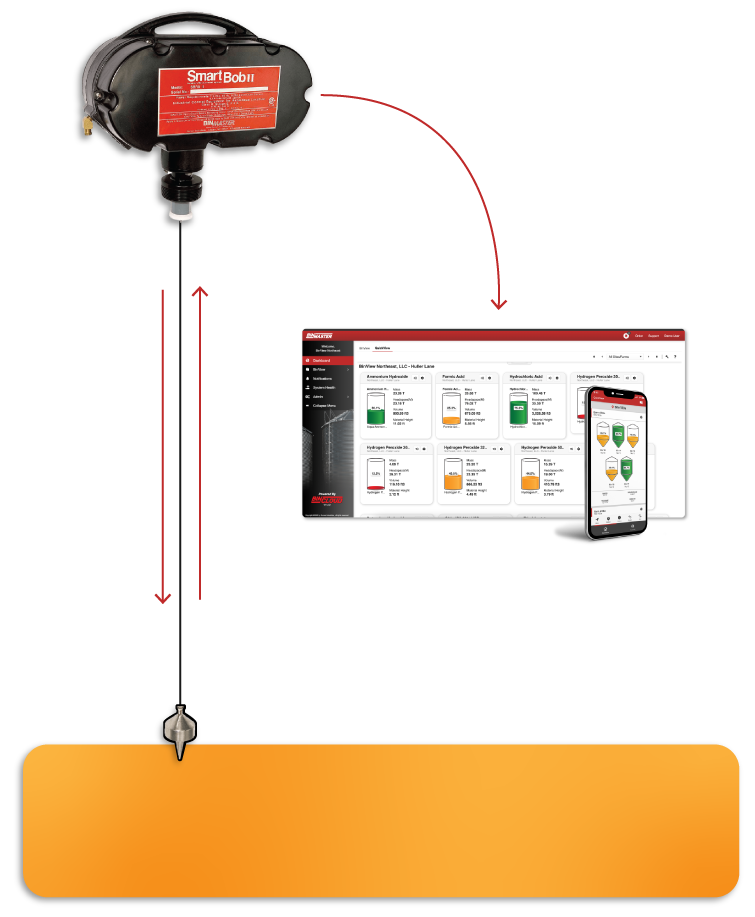
Image Credit: BinMaster
Two-Compartment Design
The mechanical and electronic components of SmartBob are separated by a special dual-compartment design. The electronics compartment is completely sealed to safeguard the sensor from dirt, humidity, and dust to prolong service life.
The cable and pulley system’s mechanical parts are housed separately and are covered by a wiper that clears the cable as it retracts. The housing is classified as Class II for hazardous areas.
Mechanical Properties
Choose from FDA-approved cable, bare stainless steel, nylon, or Teflon®-jacketed cable.
- The cable wiper wipes the cable with each retraction to keep it clean
- Sealed bearings for trouble-free operation
- The pulley channel scraper keeps the pulley channel free of debris
- Captive pulley system prevents the cable from jumping off pulleys
- The cable-leveling supply pulley ensures proper cable spooling
- The idler arm brake keeps the probe from sliding down the angle of repose in active vessels
- Standard air purge connection for use in harsh environments
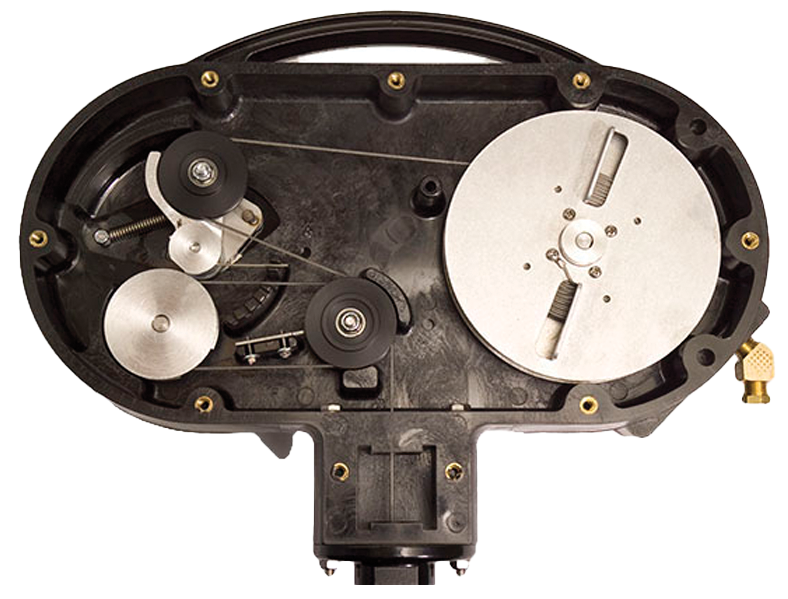
Image Credit: BinMaster
Electrical Properties
- Test button to remotely initiate a measurement
- Direct-drive reversible motor with electronic torque control for optimum pull strength
- Optional motor gearbox heater for optimal operation in cold climates
- Protected optical encoder and sensor wheel
- Dual conduit entries
- Removable wire terminals for easy installation
- Set a unique sensor address using a dip switch panel
- 110/220 VAC power options
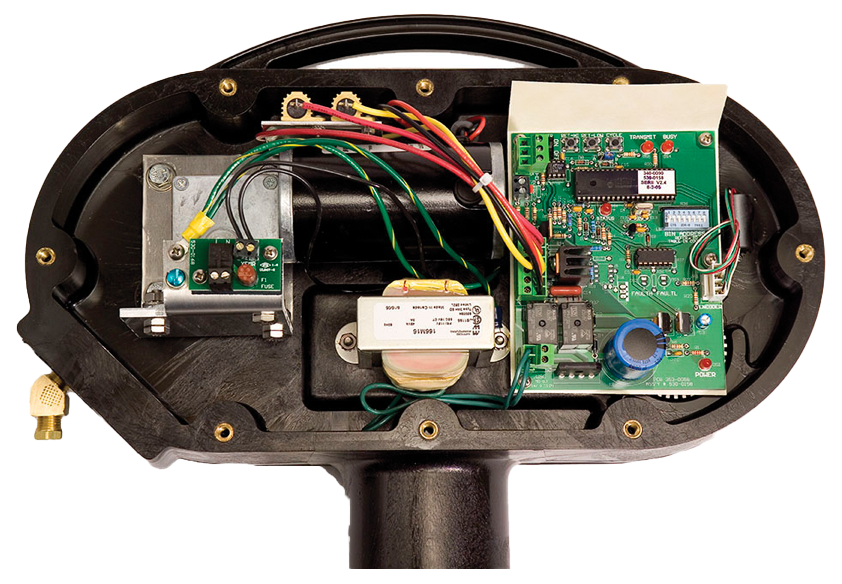
Image Credit: BinMaster
SureDrop
The SureDrop cable release device prevents the sensor probe from sticking due to material accumulation or freezing. When the device is not taking a measurement, a Teflon® cover and ball seal the mechanical compartment from dust. If the Teflon® cap is stuck, the ball above it will impact it with the entire weight of the sensor probe to remove it.

Image Credit: BinMaster
Mounting Options

Image Credit: BinMaster
Mounting Plates
Powder-coated carbon steel is used to make the 3” NPT mounting plates. To accommodate flat or inclined roofs, mounting plates are available in 0°, 5°, 10°, 15°, 20°, 24°, 30°, 35°, and 40° angles.
Optimal Mounting Location
SmartBob is best positioned 1/6 of the way around the outer perimeter of center-fill, center-discharge silos. This distance has been shown to produce the most accurate inventory data when accounting for the angle of repose in free-flowing materials.
Industries and Installations
Industries That Use SmartBob
SmartBob is employed in vessels containing particles, powders, liquids, slurries, or brine tanks up to 150 feet tall. It has been proven to be dependable in dusty and demanding applications.
It is used to monitor on-premise, corporate-wide, and vendor-managed inventories. SmartBob thrives in a variety of sectors, including plastics, chemicals, coal, concrete, food additives, drugs, feed, grain, and aggregates processors.
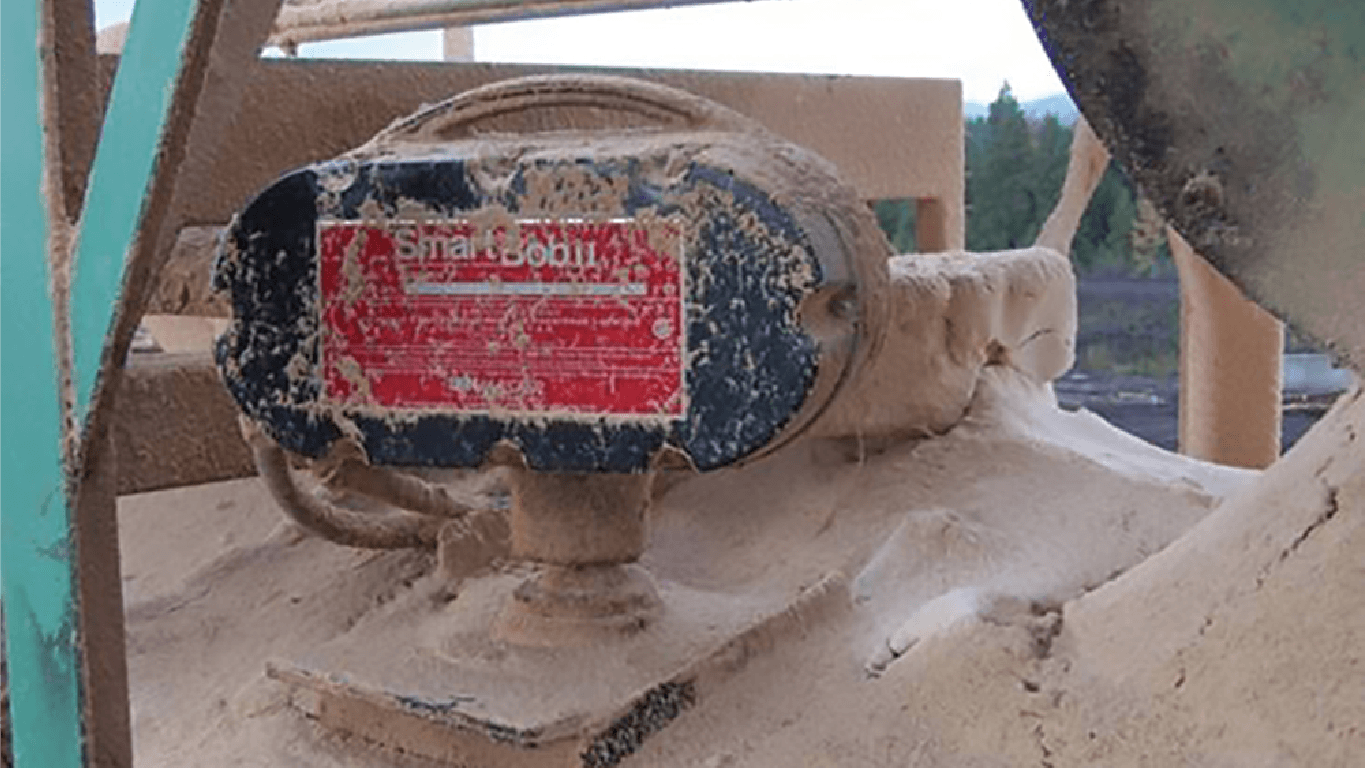
Sawdust at a wood product facility. Image Credit: BinMaster
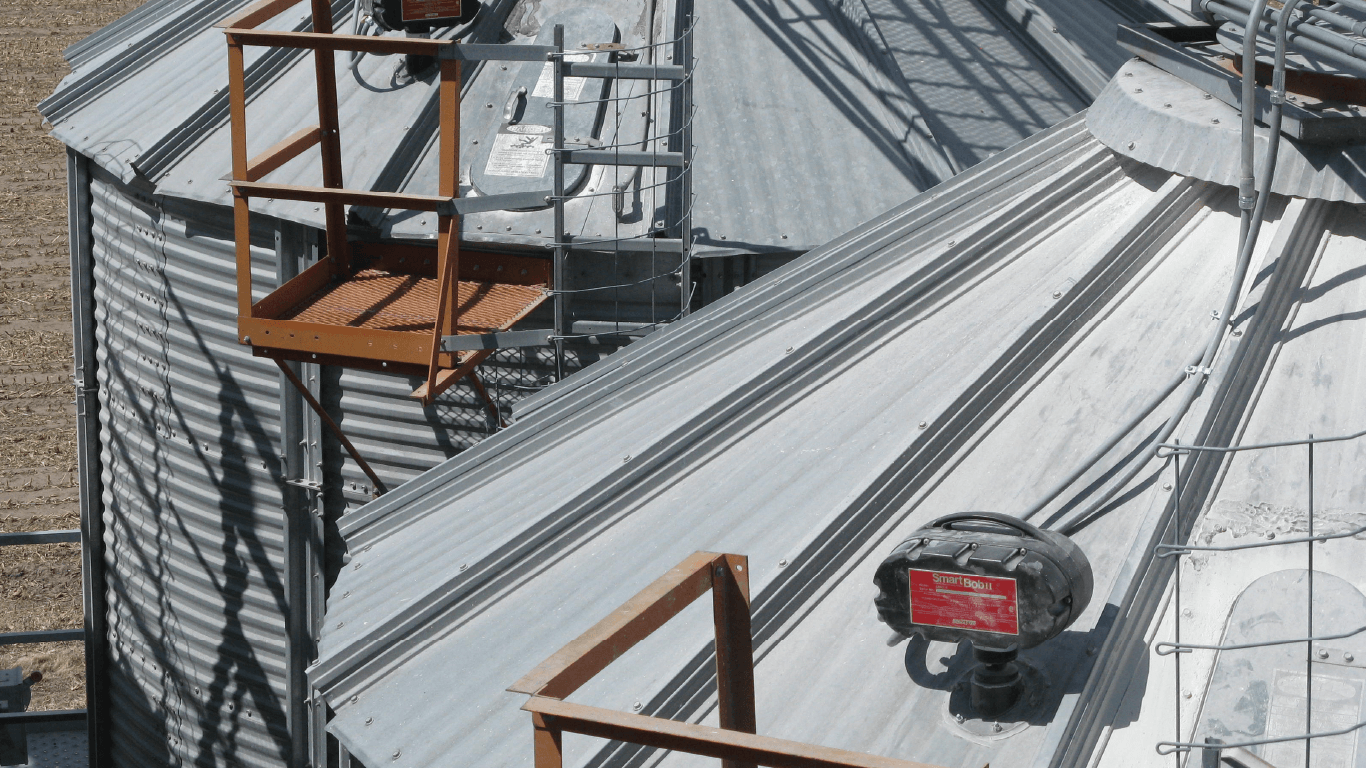
Corn in a grain storage silo. Image Credit: BinMaster
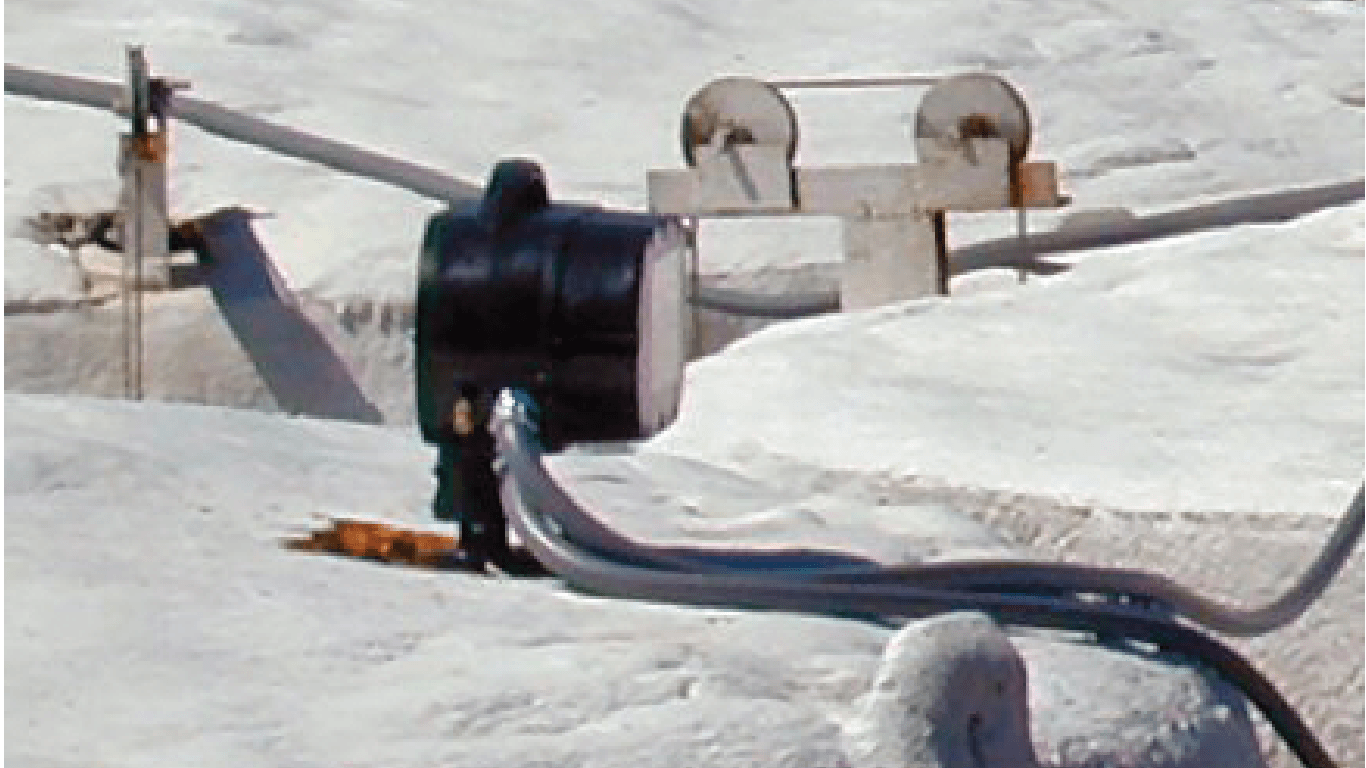
Heated molasses at a liquid feed plant. Image Credit: BinMaster
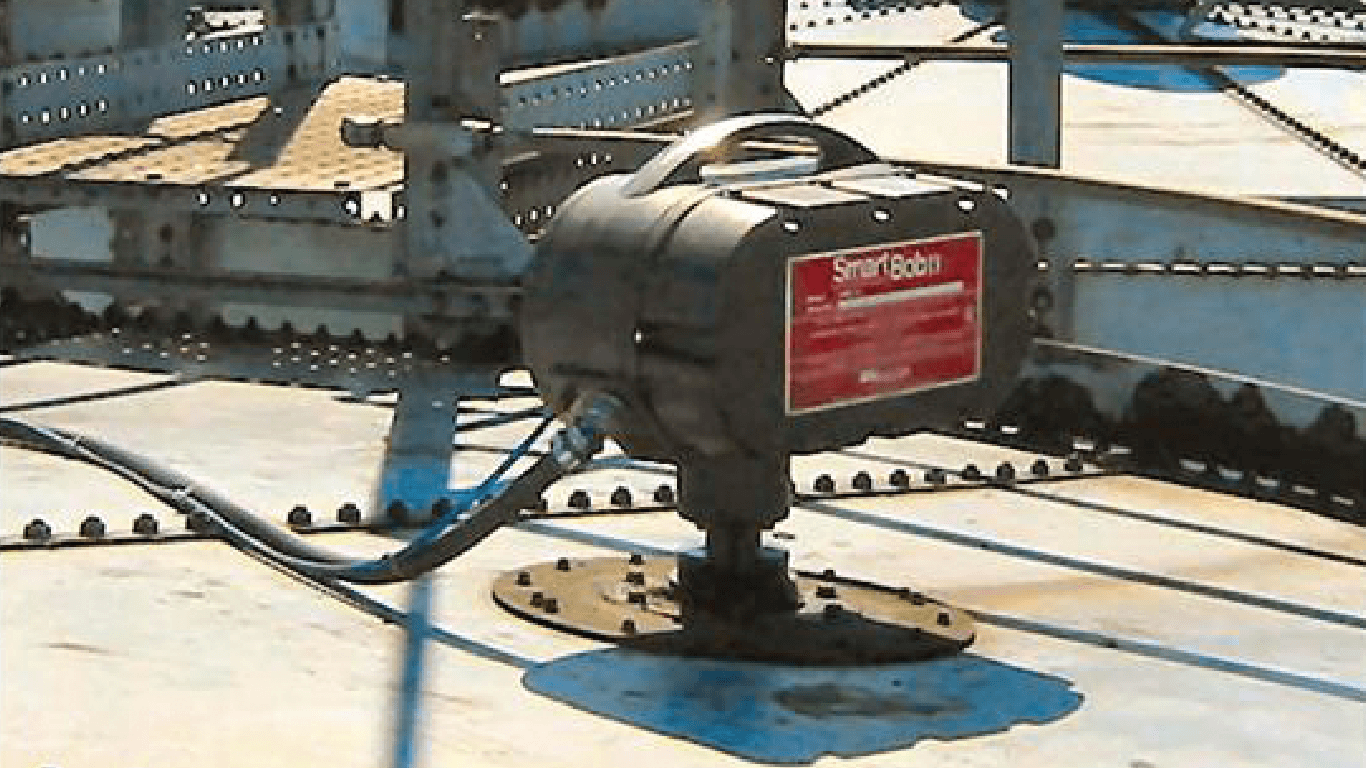
Carbon black at a rubber belt plant. Image Credit: BinMaster
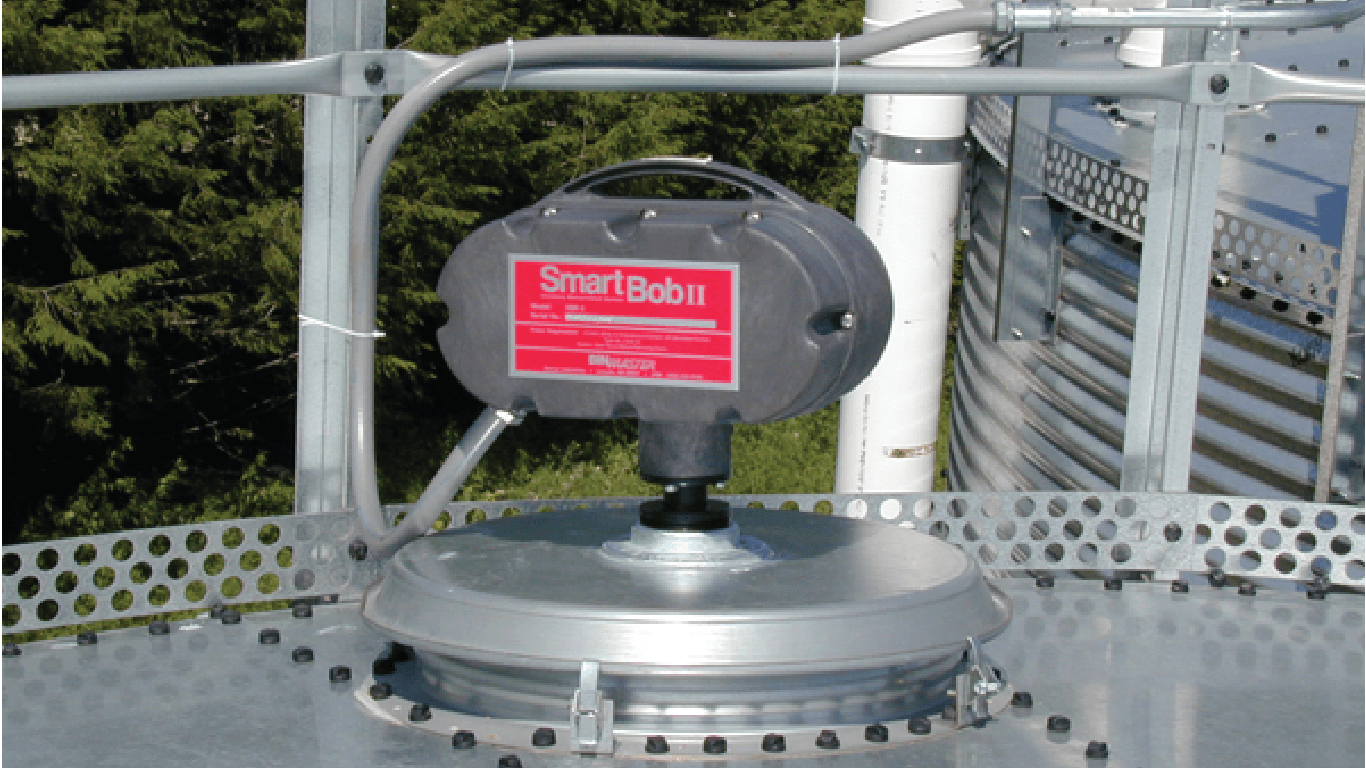
Polystyrene in a polymer manufacturing facility. Image Credit: BinMaster
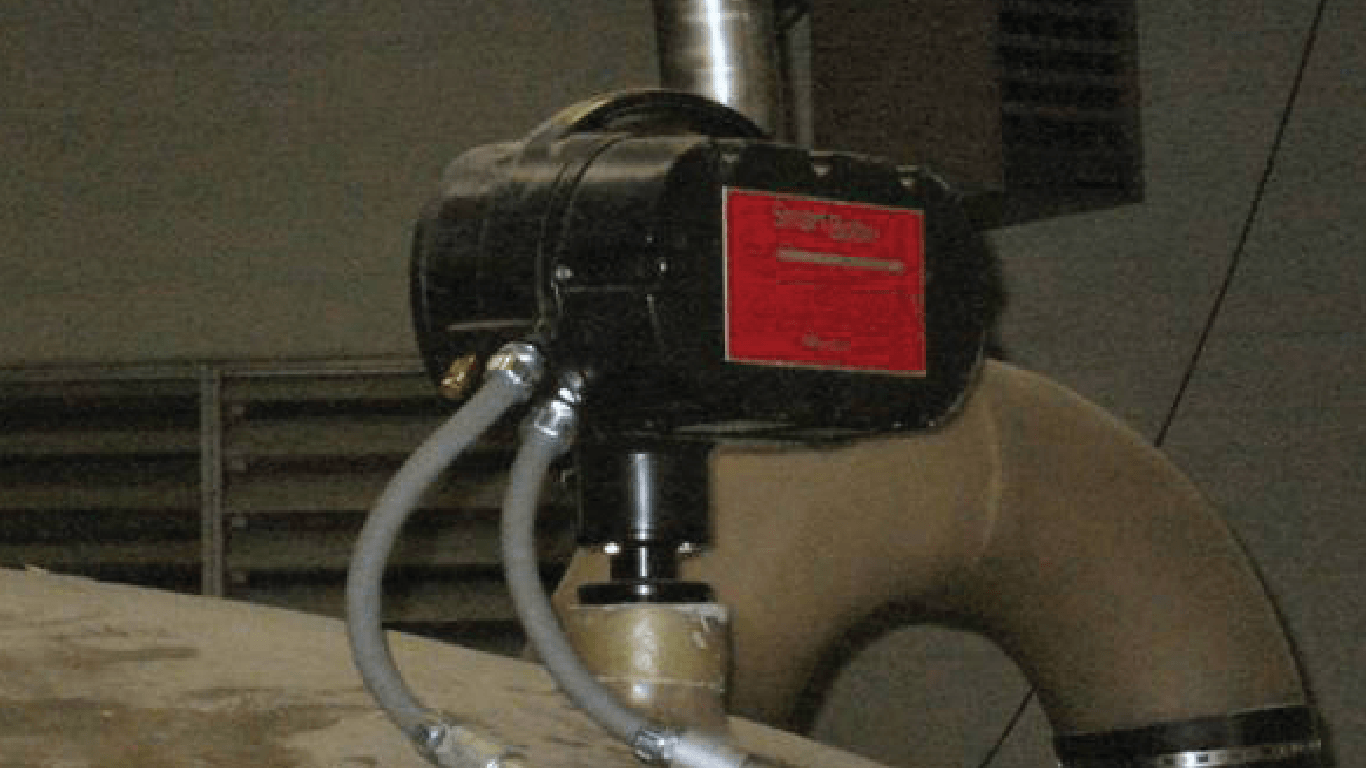
Salt submersed in water at a brine plant. Image Credit: BinMaster
Display Options
Software Options
BinCloud®
BinCloud is BinMaster’s software-as-a-service cloud platform that provides inventory monitoring from a phone, tablet, or PC. It works with SmartBob and other sensors that have a 4–20 mA analog output or Modbus RTU.
It is scalable to handle multiple vessels and locations. BinCloud offers real-time monitoring and automated alerts wherever there is internet service, albeit on-site or away from the plant. BinMaster provides customized versions of BinCloud to meet the demands of specific industries.
- AgriView: Grain, seed, feed, pet food, ag chemicals, or fertilizer
- BinView®: Industries with storage or process bins, tanks, or silos of solids or liquids
- CementView®: Cement and ready-mix concrete plants, asphalt, sand, or gravel
- FeedView®: Hog, poultry, dairy, or beef cattle operations and feed mills
- ResinView: Plastics manufacturers, molders using pellets, powders, or flakes.
Binventory®
Previously called eBob, Binventory is a software package that can be installed on a PC or local area network. It is used to manage level data for up to 255 vessels at one or multiple sites. It is compatible with SmartBobs and other sensors using Modbus RTU protocol.
Inventory data is continuously updated as and when measurements are taken. High and low-level alerts are sent automatically via text or email.
Levels are displayed graphically for one or multiple vessels. Details for each vessel and historical reports can be reviewed on the software, emailed, or exported.
Central Consoles
C-100 Console
This compact NEMA 4X console is centrally located for walk or drive-up ground-level access to measurement data in the plant or at a truck loadout. The push-button feature allows users to look through level data for up to 120 vessels. Measurements are shown as distance to the material, the height of the material, and the percentage full.
Volume estimates can be converted to feet, cubic feet, US gallons, bushels, or metric tons. In the event of a power outage, the settings and most recent measurements are saved in non-volatile memory.
C-50 Console
A C-50 analog expansion console is added when the C-100 is used for networked communications. Each C-50 can hold up to six cards, each supporting up to four 4-20 mA outputs.
Up to five expansion consoles can be used in a daisy-chained network to accommodate up to 120 SmartBobs.
Direct to a PLC
The SmartBob II AO was created for applications that require direct 4–20 mA analog output to the C-100 console, BinCloud, or Binventory software. The SmartBob II AO can immediately transmit data to a PLC, control room, or HMI.
Probes
Probes for Every Purpose
Heavy Spike
The most common probe is the B1, which is made of stainless steel. It is ideal for materials weighing more than 20 pounds per cubic foot. This hefty probe can be lowered into the water to measure submerged solids.
The B2 is the same probe made of 416 stainless, meaning that it can be picked up by a magnet. The B14 resists sticky materials as it is coated with Teflon®.
Glass Spike
The B11 glass spike, which is frequently used in frac sand, is filled with sand and utilized to reduce the likelihood of the metal entering the production process.
6” Sphere
The B9 is a 6” sphere made of stainless steel. It is used in liquids, slurries, and light powders. The B13 is coated with Teflon® for sticky materials.
6” Inverted Cone
The B4 is a stainless steel 6-inch hollow inverted cone. The bulk density of the material must be at least 3 pounds per cubic foot for it to be used for liquids and extremely light solids or powders. For sticky materials, the Teflon®-coated B13 variant is offered.
Plastic Bottle
The 32-ounce “digestible” bottle can easily pass through a rotary valve or screw conveyor without causing any damage to the equipment. The B5 model comes filled with food-grade paraffin wax. The B6 is empty for filling in the field. The B12 is filled with wax and magnetic stainless steel balls.
4” Inverted Cone
The B3 is a weighted, hollow, 4” cone made of stainless steel. It is utilized in powders and light solids with bulk densities of more than 8 pounds per cubic foot.
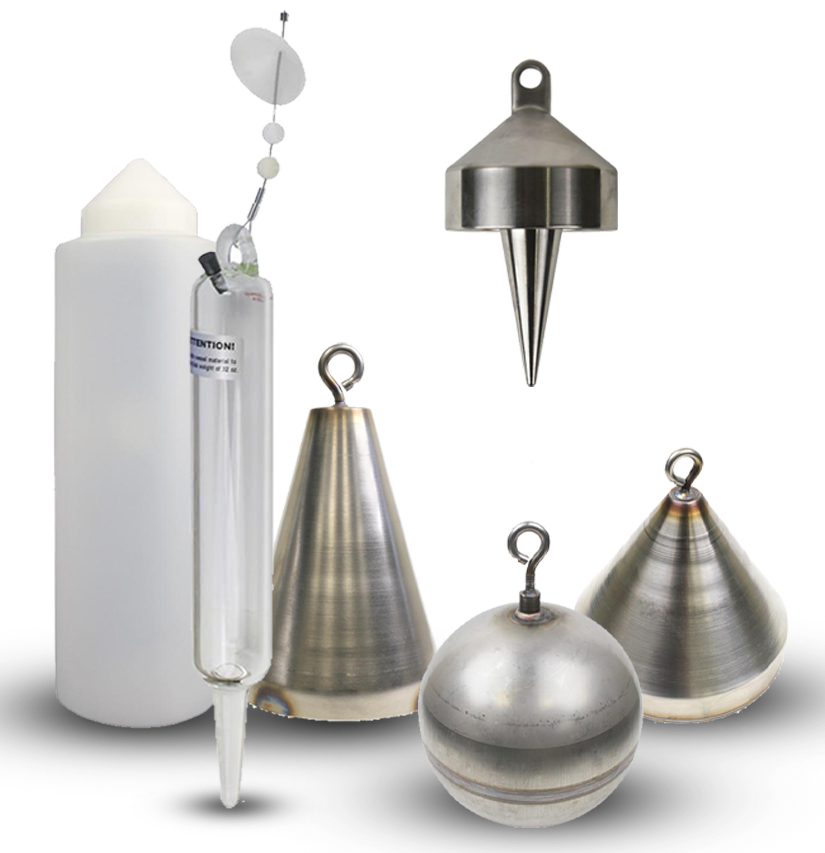
Image Credit: BinMaster
SmartBob Accessories
Heater
For areas where temperatures often dip below 32 °F, the SmartBob can be fitted with a heater and thermostat for the motor gearbox.
Extensions
A pipe extension option ensures that the probe is flush with the vessel top and stops the probe from being pulled up into a standpipe. It acts as a bushing to protect the cable from fraying. Extensions come in custom lengths of 4- to 20 feet made of galvanized, stainless steel, or CPVC.
Cable
The most frequently used is the C1 nylon-jacketed cable, which can withstand temperatures of up to 250 °F. The Teflon®-jacketed C2 cable is suited for temperatures up to 500 °F. Extreme temperatures up to 1000° are employed with the C3 bare cable. The C5 is an FDA-approved nylon-jacketed cable for use in food operations.
Wireless Transceivers
Wireless data transmitters can be used to streamline installation and lower wiring expenses.
A point-to-point network wireless solution removes the requirement for running RS-485 cable from the control source on the ground to the first SmartBob II sensor in a single group of vessels.
A multi-point solution removes the requirement for running RS-485 cable from the control source to the first SmartBob II sensor in multiple groups of vessels.